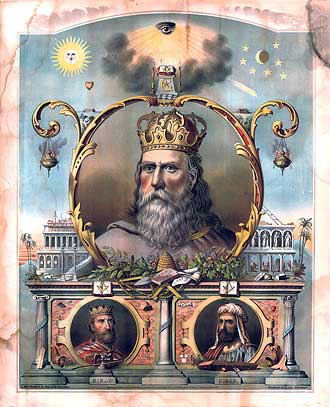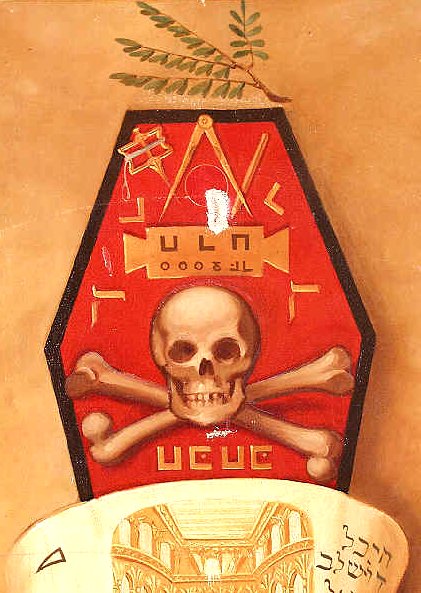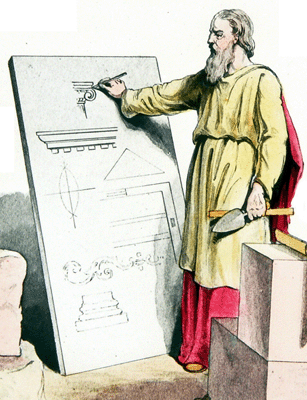The Masonic Trestleboard
The trestleboard or tracing board was used in ancient times during degrees and
has been a central tool for Masonic teachings, but the form of the trestleboard
has changed throughout time. In ancient times the need for secrecy was
larger, as dis- and mis-information about Freemasonry required its members to pay
particular close attention to what, and how, Masonic "teachings" were given. For this
reason, the trestleboard, with the several objects and symbols, were drawn in sand from
memory. No written copies were available. In former times, it was the duty of the Tyler
to literally draw the trestleboard in the sand inside the Lodge, or other meeting place,
at the beginning of each meeting. In effect, not only was the Tyler responsible for
literally tyling the Lodge, but also, by drawing the trestleboard, to enable the brethren
to commence their work - something most of us would today identify as being the
responsibility of the Worshipful Master.
 During later periods, meetings often took place in taverns, and chalk and charcoal were
used to draw the trestleboard on the wooden floor. This way, should the need arise, the
trestleboard could immediately be erased without a trace. Indeed, as taverns were public,
it was standard practice to erase the trestleboard at the end of all functions, and it was
the duty of the youngest member of the degree in which the meeting was held, to see to it
that all traces were erased. It is for this reason that mops and pails were often listed
in a Lodge's standard inventory. The tedious job of having to draw the trestleboard before
every meeting with chalk and charcoal later gave way in the 18th century to permanent
wooden, or cloth trestleboards being fixed to the floor through tape and nails. This was
probably because the need for secrecy lessened during this period, and many lodges had
obtained a more permanent location to meet than the local tavern. It was also better for
the tavern operator, or owner, for despite all the cleaning, chalk and charcoal probably
still left some nasty stains.
During later periods, meetings often took place in taverns, and chalk and charcoal were
used to draw the trestleboard on the wooden floor. This way, should the need arise, the
trestleboard could immediately be erased without a trace. Indeed, as taverns were public,
it was standard practice to erase the trestleboard at the end of all functions, and it was
the duty of the youngest member of the degree in which the meeting was held, to see to it
that all traces were erased. It is for this reason that mops and pails were often listed
in a Lodge's standard inventory. The tedious job of having to draw the trestleboard before
every meeting with chalk and charcoal later gave way in the 18th century to permanent
wooden, or cloth trestleboards being fixed to the floor through tape and nails. This was
probably because the need for secrecy lessened during this period, and many lodges had
obtained a more permanent location to meet than the local tavern. It was also better for
the tavern operator, or owner, for despite all the cleaning, chalk and charcoal probably
still left some nasty stains.
 In former times, a lodge usually had only one wooden trestleboard, showing the symbols for
all three degrees in one board. These permanent boards eventually were replaced by tracing
boards, one for each degree, which were generally smaller, more durable, and illustrated
the same points when taken together. With three trestleboards, all the important and
relevant symbols of each degree could be included in detail - as they are generally
done so today.
In former times, a lodge usually had only one wooden trestleboard, showing the symbols for
all three degrees in one board. These permanent boards eventually were replaced by tracing
boards, one for each degree, which were generally smaller, more durable, and illustrated
the same points when taken together. With three trestleboards, all the important and
relevant symbols of each degree could be included in detail - as they are generally
done so today.
The news letter that is sent out to all members of our lodge is also referred to as the
Trestle Board and it is used to provide our members with information about events happening in
and around our lodge.
